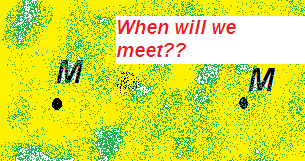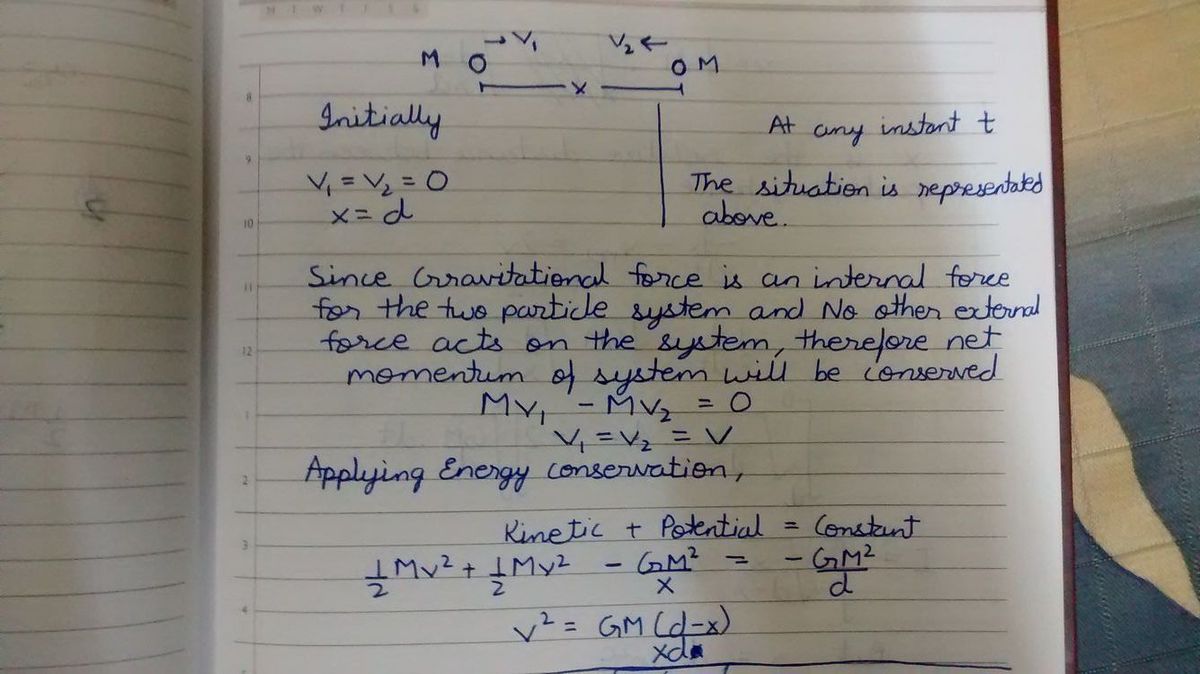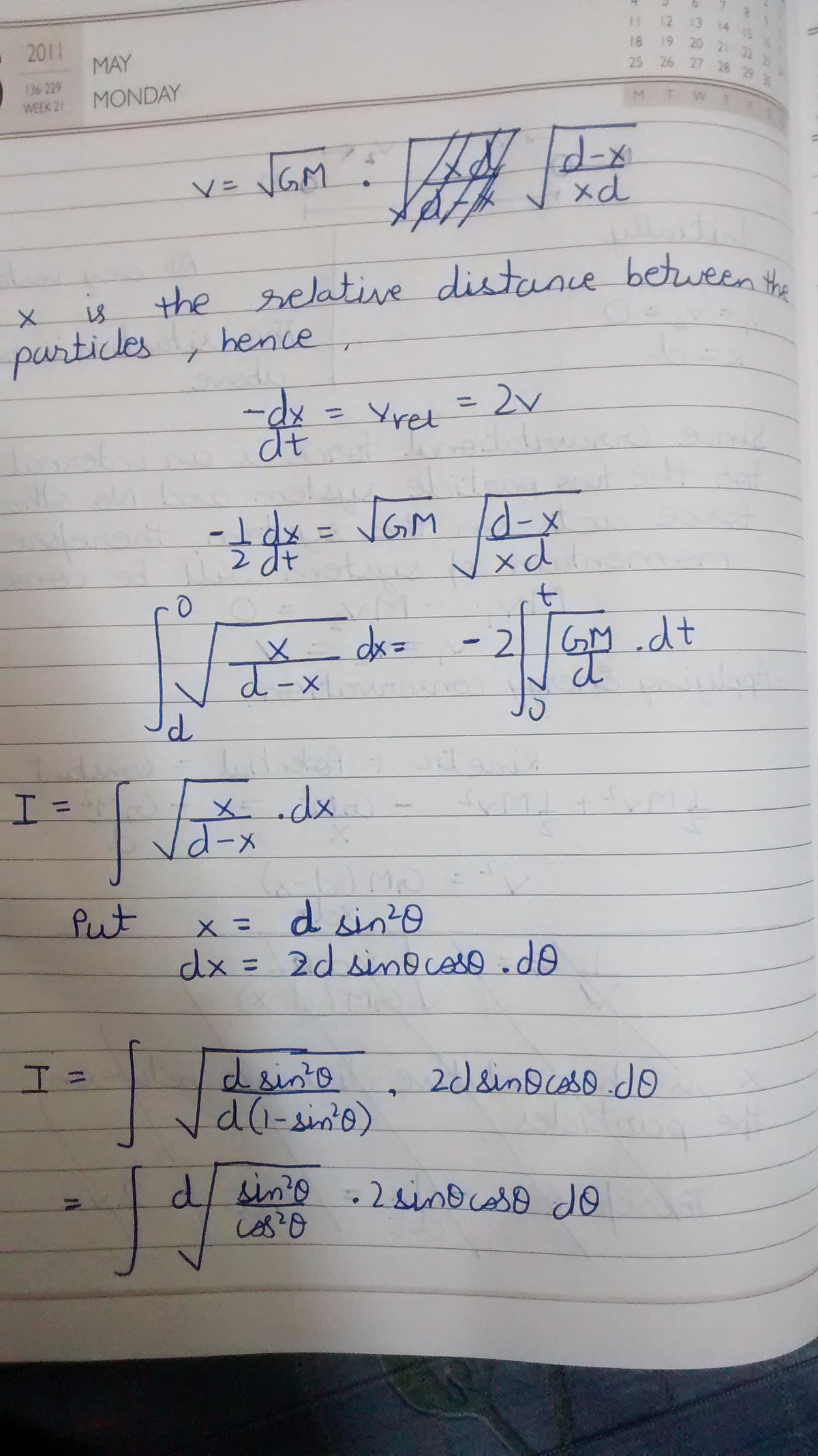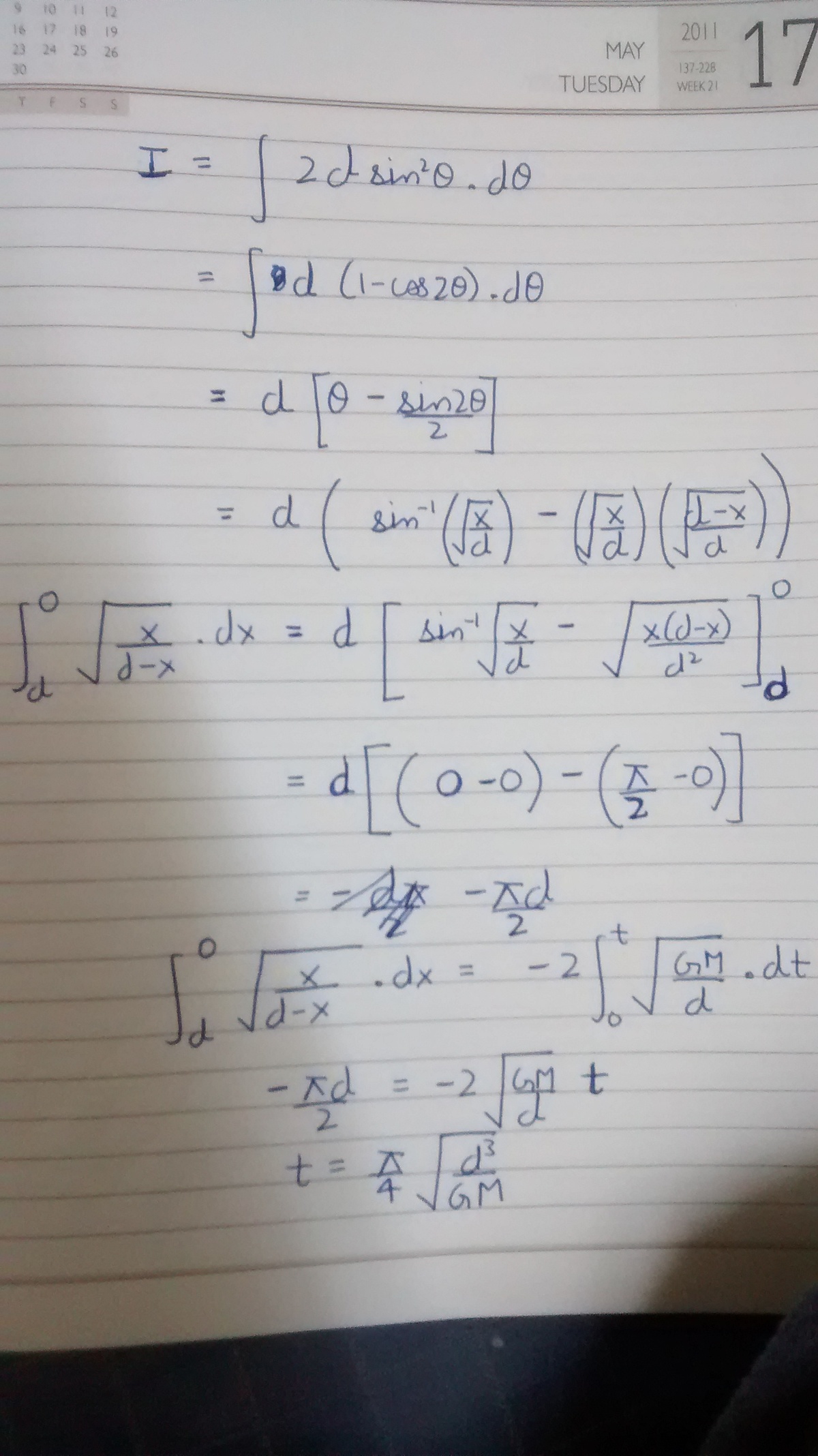The time before they met
 1) Two bodies of mass M are separated by a distance d. Consider only the gravitational force between bodies, find the time for them to meet.
if the answer is
t
=
x
G
M
d
3
find last digit of [10000x]
The value of pi should not be approximated for the answer
1) Two bodies of mass M are separated by a distance d. Consider only the gravitational force between bodies, find the time for them to meet.
if the answer is
t
=
x
G
M
d
3
find last digit of [10000x]
The value of pi should not be approximated for the answer
The answer is 3.
This section requires Javascript.
You are seeing this because something didn't load right. We suggest you, (a) try
refreshing the page, (b) enabling javascript if it is disabled on your browser and,
finally, (c)
loading the
non-javascript version of this page
. We're sorry about the hassle.
3 solutions
A very simple technique to do this problem is using the pragmatic technique of degenerate ellipse. In mathematics, the eccentricity is a parameter associated with every conic section. It can be thought of as a measure of how much the conic section deviates from being circular. e = c / a Being c is half of the focal length and a is half of the major axis of the ellipse. When the distance between the focus is zero e = 0 (it’s a circle). When the distance between the focus is large, the figure becomes a straight ie e = 1 So, we can apply Kepler's third law: R 3 T 2 = G m 4 π 2 In this case we have e=1, c=a, m=2M because both masses are rotating virtually about their common centre. R = a = d / 2 T 2 = 8 d 3 G ( 2 M ) 4 π 2 time for them to meet is T / 2 = 4 π G M d 3
F = x 2 G M 2
So, acceleration a = x 2 G M
Relative acceleration a r = 2 x 2 G M
v d x d v = 2 x 2 G M
∫ 0 v v d v = 2 G M ∫ d x x 2 d x
v = 4 G M ( x 1 − d 1 )
d t d x = 4 G M ( x 1 − d 1 )
∫ d 0 d − x x = ∫ 0 t d 4 G M d t
Now integrate and ignore the -ve sign that comes along with 2 P i
Thus, the answer is t = 4 P i G M d 3
Log in to reply
I think that you should take a instead of a relative I think there is some thing wrong while taking a relative. Maybe vdv/dx part because here v is relative velocity and not its original velocity
But I guess your answer is right.
I could not understand.Can you elaborate a little further?
Log in to reply
For example say satellites revolve around an ellipse we calculate the time period of revolution with Kepler's relation for proof you can try wikipedia. In a similar manner consider that the two bodies are revolving in an ellipse of b=0 that is approximately a straight line
Log in to reply
If I use calculus to get to the answer, would I still get the answer?
Log in to reply
@Avineil Jain – I tried it by calculus but I was unable to solve a differential equation.
Log in to reply
@Milun Moghe – I just noticed that if i took 2M instead of M in my solution then i get the answer answer correct, by calculus. Can u explain why do we take 2M, and why not M?
Log in to reply
@Avineil Jain – Could you please post your Sol first
Log in to reply
@Milun Moghe – Sure Man, right after my exams are over!



Firstly, There are two ways to start. You could either start with forming the differential equation involving acceleration and Force , Second way is by writing equation for conservation of energy. We obtain − d 2 G M . M = M v 2 − x 2 G M . M where x is the separation between the masses. Now rearranging the terms and we obtain the expression for v. We obtain v = M G d x d − x Now, 2 v = d t d x as both the bodies are approaching each other with velocity v so RELATIVE VELOCITY becomes 2v. Hence d − x d x d x = M G
Integrating both sides ∫ d 0 d − x d x d x = 2 ∫ 0 t M G d t Now for simplicity put d=1. The definite integral can be calculated using trigonometric substitution. 2 ∫ 1 0 1 − x x = π
Finally , T = 4 π M G 1
Note---We had substituted d as 1m. Also the integral can easily be calculated by substituting x = d sin 2 t